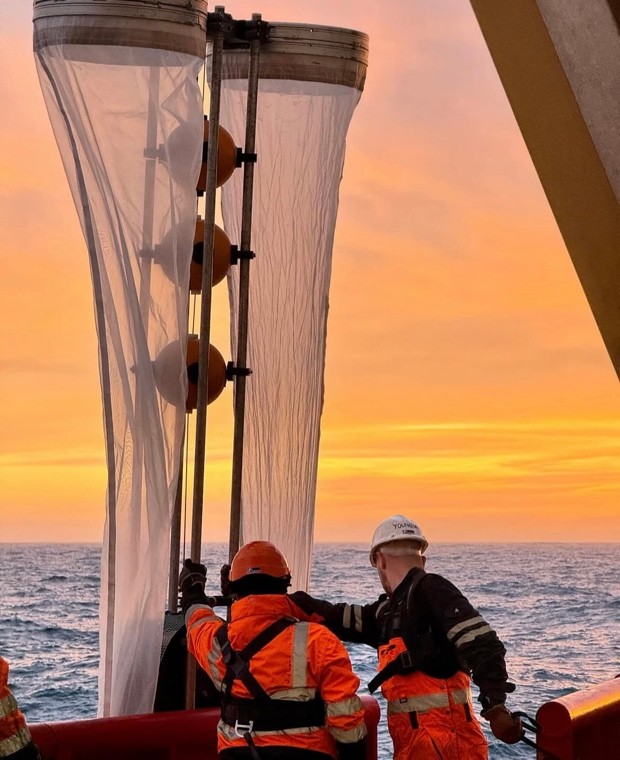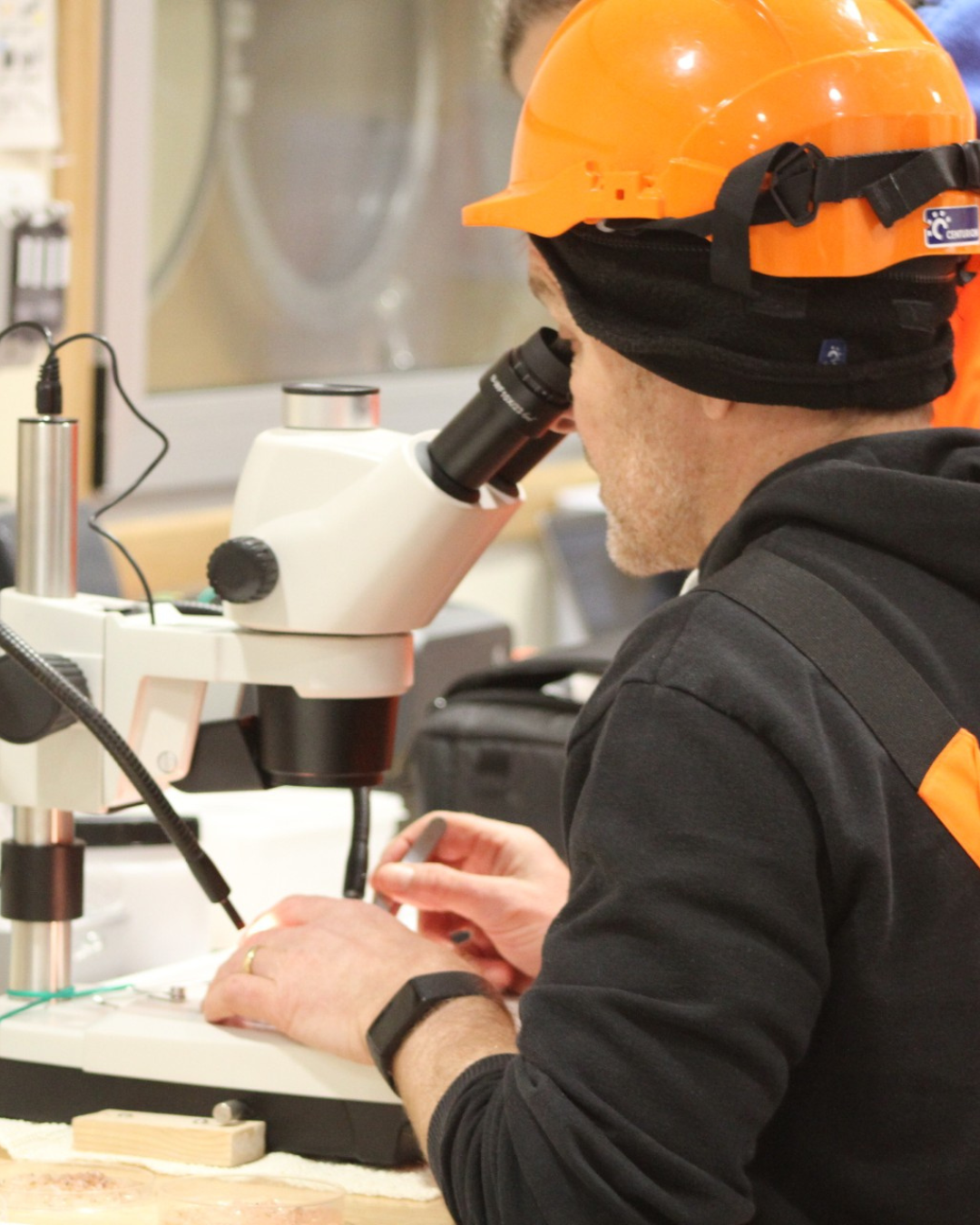A new study in collaboration with BAS scientists reveals for the first time that zooplankton migration contributes significantly to carbon storage in the Southern Ocean – a process currently overlooked in climate models.
A ground-breaking study published in Limnology and Oceanography reveals that small, but mighty, zooplankton-including copepods, krill, and salps-are key players in the Southern Ocean's ability to absorb and store carbon.

Led by an international team of researchers, the study quantifies – for the first time – how these tiny creatures collectively enhance carbon sequestration through their seasonal, vertical migrations. Part of the research was carried out on board the UK's polar research ship RRS Sir David Attenborough.
The Southern Ocean is a key region for storing carbon. Traditional thinking is that the carbon storage in the Southern Ocean is dominated by the sinking of detritus produced by large zooplankton, such as krill.
This new research is a crucial step in improving our understanding of the importance of the 'zooplankton seasonal migrant pump'. This process sees zooplankton migrate each year from surface waters to depths below 500m, storing carbon via their respiration and death during their deep overwintering phase to the ocean interior.

Dr Jen Freer, co-author and Ecological Modeller at the British Antarctic Survey (BAS):
"Krill are famous for their role in the Antarctic food web, but we find that copepods significantly dominate carbon storage overwinter. This has big implications as the ocean warms and their habitats may shift."
The team first built a big database of zooplankton collected in thousands of net hauls from around the Southern Ocean, dating from the 1920s to the present day. This included data collected on the BIOPOLE and PICCOLO cruises, the first scientific expeditions aboard the RRS Sir David Attenborough, the UK's polar research ship. This included traditional nets to catch zooplankton at different depths to observe zooplankton migration, and moorings, both fixed and floating, to catch marine snow (falling particles of marine detritus and zooplankton waste).
Key Findings:
- 65 million tonnes of carbon stored annually: the seasonal, vertical migration of zooplankton transports roughly 65 million tonnes of carbon to depths below 500 meters.
- Copepods dominate the 'seasonal migrant pump': mesozooplankton (mainly small crustaceans called copepods) account for 80% of this carbon flux, while krill and salps contribute 14% and 6%, respectively.
- Climate implications: the Southern Ocean is a critical carbon sink, but current Earth System Models overlook this zooplankton-driven process. As warming shifts species distributions (e.g., declining krill, increasing copepods, changing food sources), the carbon storage dynamics may change dramatically.

Why does the 'seasonal migrant pump' matter:
The Southern Ocean absorbs approximately 40% of all human-made CO₂ taken up by oceans, yet the role of zooplankton has been underestimated. Unlike sinking detritus, which removes both carbon and essential nutrients like iron, migrating zooplankton efficiently inject carbon into the deep ocean while recycling nutrients near the surface. This 'Seasonal Migrant Pump' could become even more important as marine ecosystems respond to climate change.
Dr Guang Yang, first author and Marine Ecologist from Institute of Oceanology, Chinese Academy of Sciences, added
"Our work shows that zooplankton are unsung heroes of carbon sequestration. Their seasonal migrations create a massive, previously unquantified carbon flux-one that models must now incorporate".
This research stresses the urgent need for updates to climate models to include zooplankton-driven carbon fluxes. It also highlights the necessity to manage and protect Southern Ocean ecosystems, where industrial fishing and warming threaten krill populations – a key species that supports both carbon export and Antarctica's unique biodiversity.
This international study was a collaboration among scientists from China, UK, and Canada, and leverages a century's worth of data on zooplankton biomass, distribution, respiration and mortality across the Southern Ocean.
Seasonally migrating zooplankton strongly enhance Southern Ocean carbon sequestration by Guang Yang, Angus Atkinson, Evgeny A. Pakhomov, Katrin Schmidt, Weilei Wang, Jennifer J. Freer, Geraint A. Tarling was published 23rd of June 2025 in Limnology and Oceanography http://doi.org/10.1002/lno.70120






